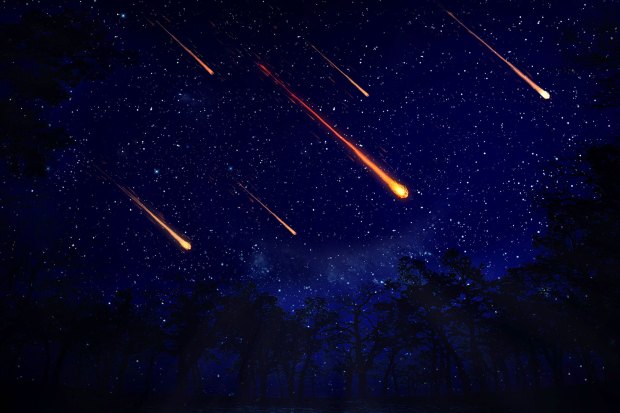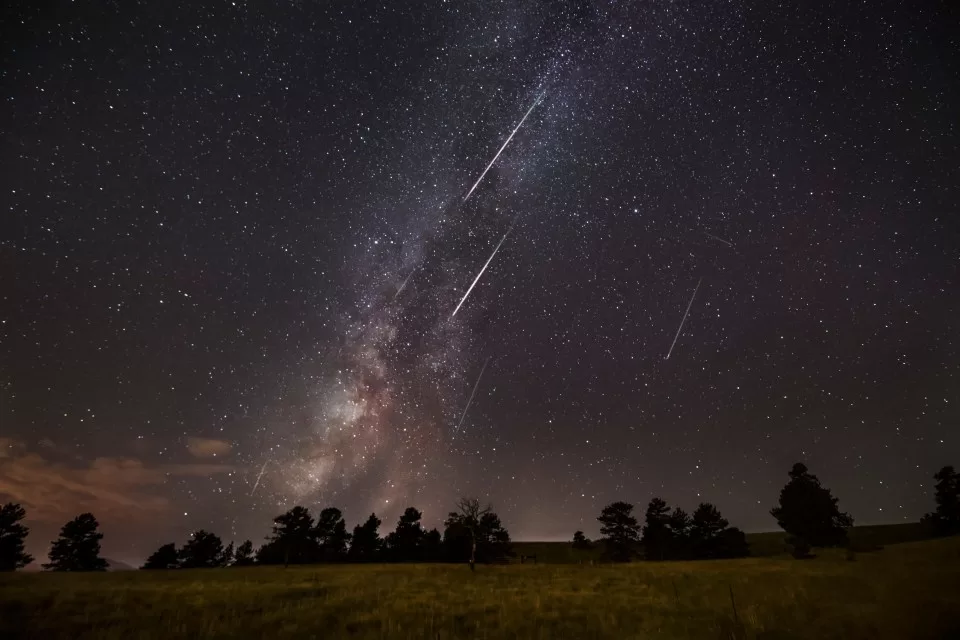STARGAZERS are in for a treat this month, with two separate meteor showers to be visible in the sky.
And the first meteor shower, dubbed the Draconids, will be visible from tonight.
The Draconid meteor shower will be active between 6 and 10 October, but will peak around 8 to 9 October.
Named after the constellation Draco, where they seemingly come from, the meteors are the debris leftover from Comet 21 P/Giacobini-Zinner which is currently zooming past Earth.
Meteor showers are named after the constellation from which the meteors appear to emanate from our perspective on Earth.
Stargazers will be able to see roughly 10 shooting stars per hour.
While certainly one of the more tame meteor displays in recent years, the Draconids caused some of the most active displays of the 20th century in 1933 and 1946.
Unlike other meteor showers that are better caught early in the morning, the Draconids are best seen in the evening.
Head outside just after sunset in an area with a clear dark sky.
Fortunately the entire meteor shower occurs just before the Moon’s first quarter phase, when the lunar disk is in waxing crescent.
This means observing conditions will be good, with little lunar luminosity casting light in the sky.
To get the best view, download an astronomy app to show you where the Draco constellation.
The radiant point for the Draconid meteor shower is near the stars Eltanin and Rastaban, in the head of the constellation Draco.
What is a meteor shower?

Here’s what you need to know…
- During a meteor shower, fireballs appear to streak across the sky
- This happens because pieces of debris are rapidly burning up as they enter Earth’s atmosphere
- That debris is often left behind by a collision between two space objects, like a planet or comet
- The Orionids shower is debris from Halley’s Comet, a huge chunk of ice orbiting the Sun
- Many meteor showers are repeated
- They occur at a height of around 62 miles
Orionid meteor shower
The Orionid meteor shower, one of the best known and most reliable shooting star displays, is active from 2 October to 7 November.
However, it will reach peak activity – when it will be most visible – between night and dawn on 21 and 22 October.
Experts at the Royal Greenwich Observatory, London, note that stargazers should be able to see the shower for several days on either side of this ‘peak’ date.
The annual meteor shower is the rocky debris from Comet Halley, which swings by Earth roughly once every 75 years.
Stargazers will be able to see up to 25 shooting stars per hour during its height.
But unlike the Draconids, the viewing conditions for the Orionid meteor shower won’t be so favourable.
The Moon will be in waning gibbous, the phase that follows a full Moon, where much of the lunar disk will be illuminated.
This can cast a lot of light in the sky and make it harder to spot the fainter meteors.
What’s the difference between an asteroid, meteor and comet?
Here’s what you need to know, according to Nasa…
- Asteroid: An asteroid is a small rocky body that orbits the Sun. Most are found in the asteroid belt (between Mars and Jupiter) but they can be found anywhere (including in a path that can impact Earth)
- Meteoroid: When two asteroids hit each other, the small chunks that break off are called meteoroids
- Meteor: If a meteoroid enters the Earth’s atmosphere, it begins to vapourise and then becomes a meteor. On Earth, it’ll look like a streak of light in the sky, because the rock is burning up
- Meteorite: If a meteoroid doesn’t vapourise completely and survives the trip through Earth’s atmosphere, it can land on the Earth. At that point, it becomes a meteorite
- Comet: Like asteroids, a comet orbits the Sun. However rather than being made mostly of rock, a comet contains lots of ice and gas, which can result in amazing tails forming behind them (thanks to the ice and dust vaporizing)


